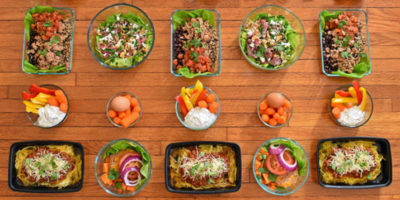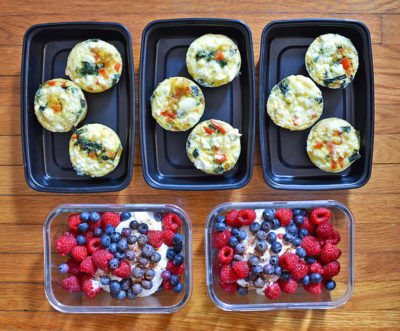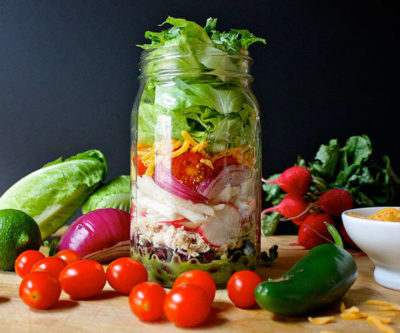Meal Planning for Busy Moms
If you are like many people, you have such a busy life, that making homemade, healthy meals each day is a constant struggle. Instead of just giving in and going through the local drive-thru or ordering pizza three nights a week, why not give meal planning and meal prepping a try? Each of these options can help you save time, money, and still prepare healthy meals each day for your family.
 What is Meal Planning?
What is Meal Planning?
Before you can start on your meal prep, you need to plan your meals. Meal planning is nothing more than figuring out what meals you are going to make in the near future. It can be as detailed as you want, though the more information you include in your meal scheduling, the better off you will be.
By starting with meal planning, you will then know what and how to better meal prep. This is going to help save you time because you aren’t running to the store every day trying to figure out what to get for dinner that night. You already know the meals for at least a week beforehand. Here is a rundown of how meal planning works, though keep in mind there is a lot of room for variation.
How Many Weeks to Plan For
The first thing you should decide is exactly how much meal planning you want to do, in regards to how many days or weeks to plan ahead of time. This really depends on you, and a number of factors should be considered. Think about how much time you have for meal planning and prepping, how often your family likes to switch up recipes, and realistically what you can spend at the supermarket for planning these meals.
You should also consider how much room you have in your refrigerator and freezer. Planning for three weeks ahead of time is fine for the schedule, but you might not be buying food for this long if you don’t have somewhere to put everything.
When you are just starting out, try to plan for just one full week and see how it goes. This should include all meals and snacks your family will eat for that entire week, including breakfast, lunch, dinner, snacks, and desserts.
It includes meals you will prepare at home with leftovers, lunches your kids and you will bring to work or school, and any extra items you need, such as bringing brownies to the local potluck or any other special occasions. Also make note of any meals you might be eating at restaurants that week.

A Good Way to Start Meal Planning
If you’re not sure where to start with planning your meals, you can make it easy by taking stock of what is in your kitchen. Take note of everything in your pantry and refrigerator, write it down, and see what meals you can make from those ingredients.
This should be a good start, and then all you might need are some filler ingredients. You may have almost all of the ingredients you need for homemade biscuits, so you know you can have a meal that uses those biscuits as a way of saving money and time.
Once you know everything you already have, start considering what the different meals are that your family will be interested in, but don’t forget about considering how each of those meals will be prepared. If you know you will be pressed for time, try to think of meals you can make ahead of time or that can be made in the slow cooker all day while you are at work.
How to Be Detailed in Your Meal Plans
Once you have started noting down some meals you would like to make during the week, try to be as detailed as possible. If you think you will have leftovers from a chicken dinner in order to have lunch for 2-3 days, note that in the plan!
This helps you reduce how many lunches you need to prepare, which further saves you a lot of time when it comes time to prepare your different meals for the week. After listing the meals, make another list with all the groceries you need to purchase, minus what you already have on hand.
Leaving Room For Flexibility Throughout the Week
While planning every meal is a great way to save time during the week, there are going to be some situations where it doesn’t go quite as you planned out. Make sure you leave some room for flexibility in your meals and meal planning.
For example, you might have a day where you want to go out to dinner because your spouse got a big promotion and you want to celebrate. Don’t hesitate to celebrate just because you planned to make spaghetti that night. Just readjust your schedule and make it another night. Meal planning is meant to simplify the process, not restrict you too much.
Include Leftovers in Your Plan
Always try to think about leftovers or using certain ingredients in your meal planning that can be used for multiple meals. If you know you want to make chicken and dumplings and are going to buy a pack of chicken breasts, buy more than you need and freeze them. This lets you have enough chicken for that meal, but also for chicken soup, salads, sandwiches, or other dinner ideas. You are going to save money and time by having the extra chicken on hand.
How is Meal Prepping Different?
Meal planning and meal prepping are often confused, but these are actually two entirely different things. With meal planning, you are simply deciding what the future meals will be. When you meal prep, you actually buy those ingredients, then start getting certain aspects of the meal prepared, so that very little needs to be done each day when cooking time arrives.
Types of Meal Prepping
There are two basic elements to meal prepping: chopping vegetables and putting ingredients for meals into containers, and actually cooking some aspects of the meal and freezing them. You can do one or both of these options depending on how much time you think you will have. Some people simply do the prep work, such as getting all their veggies chopped up, rice measured, and snacks into portion baggies to be used during the week. Others actually cook the casseroles and chicken, and then freeze them so that dinner just involves popping them in the oven.
Containers to Use
When you are planning on prepping meals, you need to be careful with the types of containers you use. These containers are not just storing the ingredients and cooked food items, but meant to keep them fresh in the refrigerator or freezer for an extended period of time. You need to be careful what you choose to store items in and how they are stored. Here are some recommendations for food storage containers:
Choose containers with airtight lids.
Make sure that your containers keep the food fresh with airtight lids. If you intend to use Tupperware-type containers, try filling them with water, then turn them upside down and make sure no water leaks out. This is a good way to tell how fresh your food will be in the containers.
 Try storing items in mason jars.
Try storing items in mason jars.
Mason jars are perfect for storing certain items and meals. For example, if you like to take salad to work, try putting each day’s salad in a separate container. Choose the wide-mouth containers and add the denser items at the bottom. The greens should always be at the top so they don’t get wilted or weighed down. Keep your salad dressing in a separate container. Here are some recipes for mason jar salads as an example.
Be careful with plastic storage items.
Plastic is fine to use, but you should know what type of plastic you are using. Make sure it is refrigerator, freezer, microwave, and dishwasher-safe first of all. Also check that the plastic containers don’t have any BPA, which can be dangerous when adding or cooking food in these containers.
Consider casserole dishes that work for baking and storage.
When you are actually cooking bigger meals ahead of time to just be reheated each evening, you want to use multi-purpose casserole dishes. Use glass dishes that you use for baking, but that can also be used for storing them in the freezer. Just make sure you leave them out in room temperature after cooking to cool down before freezing them, or they might crack.
Tips For Meal Prepping
As you get started with meal prepping, there are some other things you need to keep in mind. Follow these simple tips for prepping your meals after you are done with meal planning:
- Cook all your meat at once.
- Label every container so you know when to use it by.
- Note what prepping is being done for leftovers.
- Use ingredients that can be prepped for multiple meals.
- Get freezer bags together with ingredients that will go in the slow cooker.
Meal Ideas For Prepping
Here are some different meal ideas that work perfectly with meal planning and meal prepping.
 Put together different overnight oatmeal jars.
Put together different overnight oatmeal jars.
To get some healthy breakfasts prepared, add overnight oats to multiple jars, one for each day of the week. In addition to the oats, you can add different toppings for each day. Some toppings to consider include cinnamon, sugar, slivered almonds or other nuts, dried fruit, berries or fresh fruit, raisins, and granola. Here are some recipes to get you started.
Roast your vegetables beforehand.
To get vegetables ready for lunches and dinners throughout the week, spend one day roasting all the vegetables at one time. Choose vegetables with about the same cooking time, roast them together, then place in containers and freeze them.
Use a vegetable spiralizer instead of pasta.
To make healthy, low-carb meals and meal prep at the same time, consider using a vegetable spiralizer. This takes vegetables like zucchini and squash and creates pasta out of them. Spiralize your veggies on a Sunday, then save them for the week’s ‘pasta’ meals.
Bake all of your meat, then freeze portions for each meal.
Decide what meat you want to use for multiple meals, then bake or cook it all at the same time. Do this in the oven or your slow cooker. Meat like chicken breasts, fish filets, and strips of steak work great for this.
Keep salad veggies and toppings in one container.
For your salads, you can make it faster to put them together by having all of the greens and vegetables together in containers. Keep all your greens in one big container, and all the chopped veggies, cheese, and other toppings in another container.
With these tips, you will be on your way to both meal planning and prepping. This is going to save you a lot of time, not to mention help you make healthier meals for your family.
Related Posts
I Need to Change My Face
I Need to Change My Face I recently read a blog post by Dr. Brené Brown, about something she learned from Toni Morrison. She had watched Morrison on Oprah, and the question was about how you react when a child enters the room. "Does your face light up?" asked...
The FOMO of a Working Mom
The FOMO of a Working Mom In our family, I work out of the home and my husband works from home. He's a solo-preneur and always has been, and it's been amazing that he can make his own schedule. Since we've had kids it's been a life saver, and he arranges his...
Do You Have Enough Space?
Do You Have Enough Space? Do you have enough space? In a world where everyone's talking about Marie Kondo and decluttering, this is a pretty common question. But I'm not necessarily talking about physical space. I'm talking about mental and emotional space. On...




